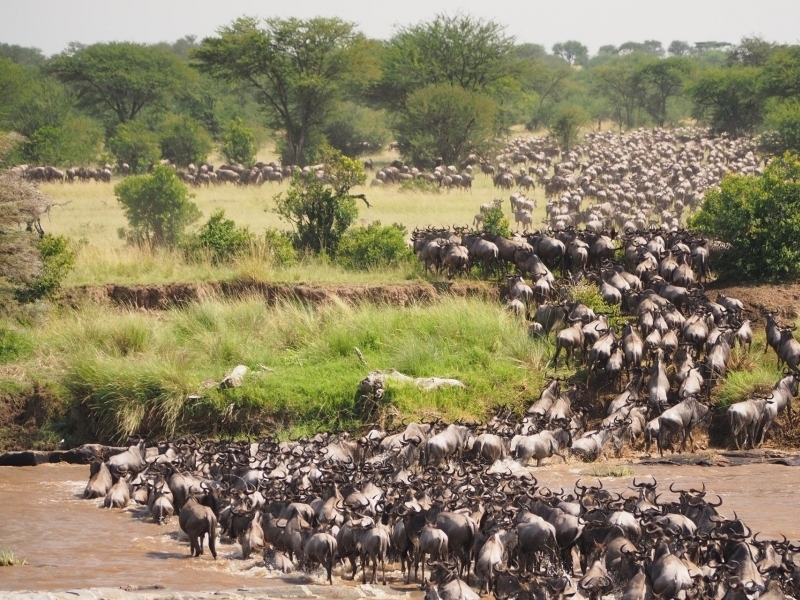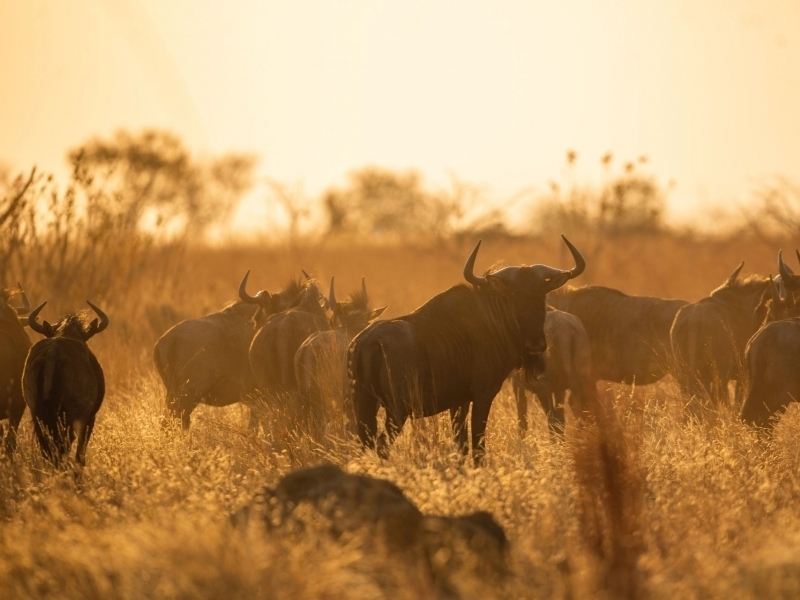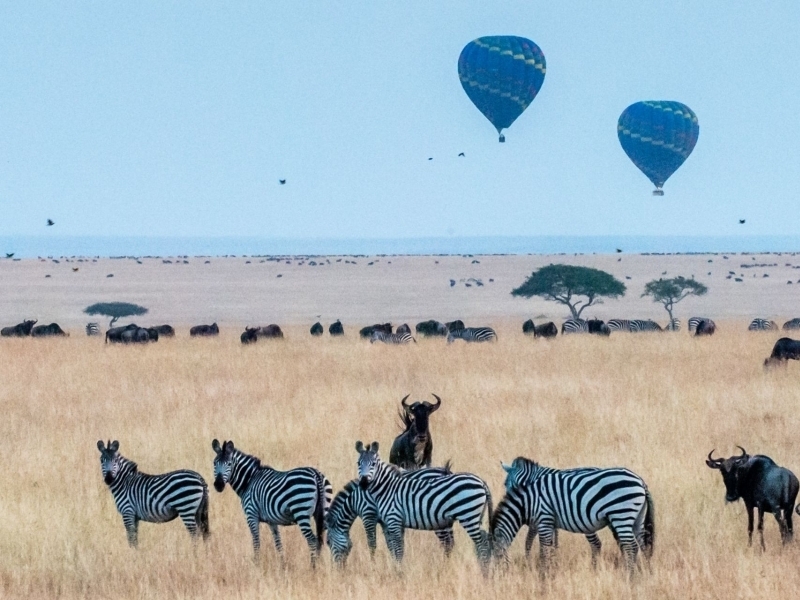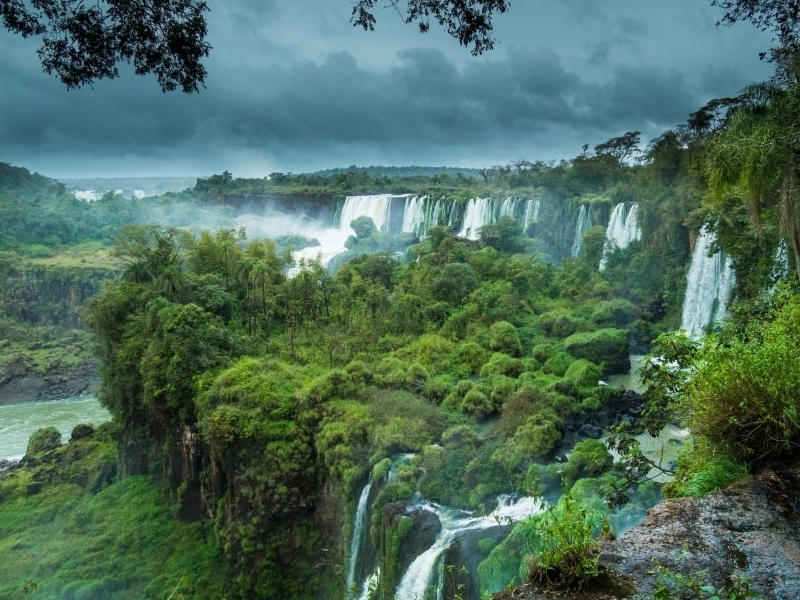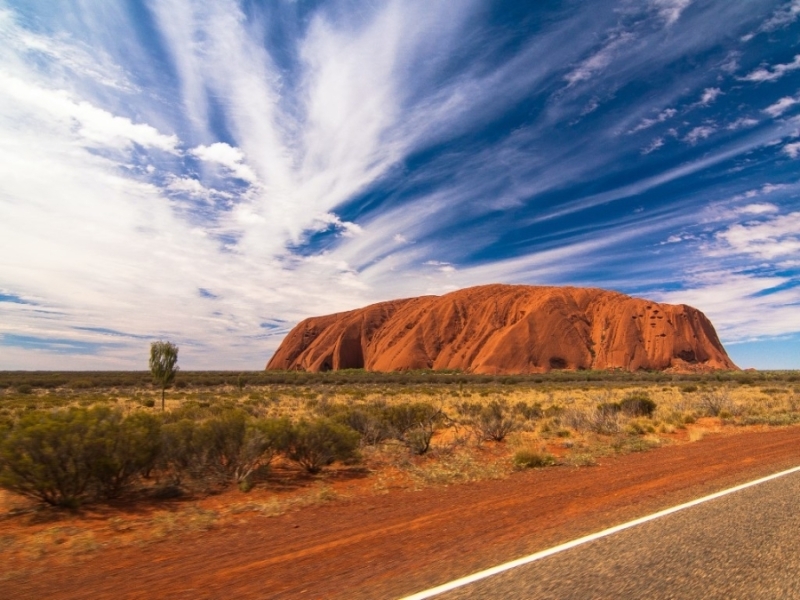News and Testimonials
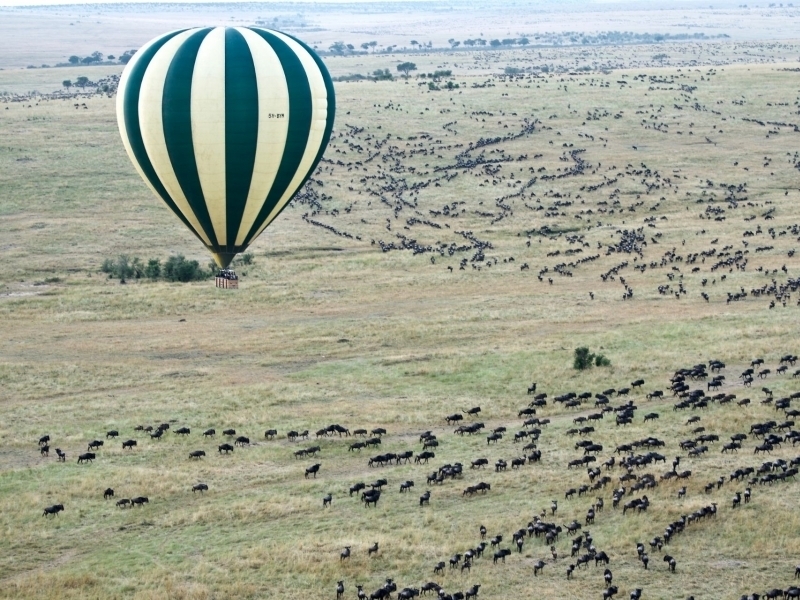
WILDEBEEST MIGRATION IN KENYA: THE GREATEST SHOW IN THE WORLD
The plains trembled and the swirling, brown cloud of dust hovered as the wildebeest moved towards the Mara River. The Great Wildebeest Migration across the plains of East Africa had begun.
The migration is one of the world’s most spectacular displays of wildlife behavior. Nowhere is there a terrestrial movement of animals as immense as the wildebeest migration. It is a thrilling, intriguing and marvelous sight.
THE WILDEBEEST MIGRATION BEGINS WITH A TRICKLE
At first, it is just a trickle. An advance guard of zebras and a few columns of wildebeest. They cross the Tanzanian border and spill onto the savannah plains of the Masai Mara National Reserve. The reserve which is in Kenya forms part of the continuous ecosystem with the Serengeti National Park in Tanzania.
The trickle soon becomes a flood as the main body of the migrating herds comes rumbling in. For the next three to four months, usually between July and October, they stay in the Mara enjoying the fresh green pastures.
They remain until the arrival of the short rains sometime in October or November. Then, Tanzania draws them south once again.
As the masses of wildebeest move towards the river and gather on the banks, their urgency and hesitation can be sensed. The energy in the air crackles with anticipation and is gripping.
Watching them, the wildebeest seemed to be mustering courage, as not even they appeared to know when to cross. It is impossible to predict. Some arrive at the water and swim over immediately while others spend days grazing. Still others turn back to where they have come from.
Unfortunately, the spectacle of the migration is misunderstood by many visitors which can lead to disappointment. It is not a mass of rushing herds as often seen on TV and in documentaries. Most of the time the wildebeest spend time grazing and gradually moving forward towards the numerous water crossings.
It takes time and patience to see them lining up in columns. Plus, luck to be at the right place at the right time when they decide to cross.
RIVER CROSSINGS OF THE WILDEBEEST MIGRATION
The Mara River meanders for 360 km and the animals can cross anywhere. So, although there are some well-known places, there is not a single crossing point and there are no guaranteed places to witness the dangerous and frenzied river crossings.
During the migration, there are numerous daily crossings over the Talek and Mara Rivers. One of the misconceptions of the migration is that the crossings can be predicted and are always at set river points. There are just a few individuals at some places, while others see a mass of animals moving without a break for hours.
THE MYSTERIES OF THE WILDEBEEST MIGRATION
The migration occurs within an area that is known as the Serengeti ecosystem. It is not a single isolated event. Instead, the phrase describes the constant movement of over 1.5 million wildebeest. In addition, there are hundreds of thousands of zebra and smaller numbers of antelope such as eland, topi, impala, Grant’s and Thompson’s gazelle.
The noisy, grunting army, chomp and trample the grass and rush across the Mara River in search of fresh grazing. In doing so they provide predators with a season of plenty until the rain in October and November draws them south to Tanzania again.
The Mara is the most northerly portion of the migration route and is the acclaimed location for the wildebeest migration due to its famed Mara River crossings. It has been named as one of UNESCO’s Wonders of the World and is one of the most sought-after experiences for wildlife and nature enthusiasts.
MIGRATION CALENDAR
Although there is no beginning or end to the migratory circuit, it seems reasonable to call the birthing season, around the end of January/early February, the start of the migration. In mid-March, the mothers have calved and thousands appear milling around the rolling plains of the Serengeti. With the abundance of vulnerable young calves, it also means that predators are numerous and hunting is easy.
During April, the herds begin to drift northwest towards the fresher grass of the central Serengeti, bringing thousands of zebra and smaller antelope with them. By May the columns of wildebeest stretch up to 40 km. The mating season begins towards the end of the month, with the males battling head-to-head during “the rut.”
Throughout this time the journey continues at a leisurely pace with the wildebeest, zebra and gazelles grazing as they go along. In June, the dry season usually begins. By July they have been trekking across the plains for 3 months. But, still they have the final hurdle of the rivers to confront.
At the end of August, most of the animals have faced the challenge of the Mara River crossing. It is now time to enjoy the nutrient-rich corn-coloured grasses that stand tall enough to hide a prowling lion.
During September and October, the main chaos has ended and the migration gradually moves eastwards. However, the wildebeest must once more prepare to cross the Mara River for their return journey southwards.
The plains are bare by the time the wildebeest return south at the end of the dry season. Millions of mouths and hooves have reduced the lush green grasses to yellow stubble.
During November the storm clouds gather in the distance. The wildebeest sniff the air and start heading back to the Serengeti National Park in search of fresh green meadows. By January they have completed the southward trek and the cycle continues as the calving season begins once again.
As if they have no memory of the dangers ahead, they still go on their migration circuit year after year.
Source: https://www.goworldtravel.com/wildebeest-migration-kenya/

